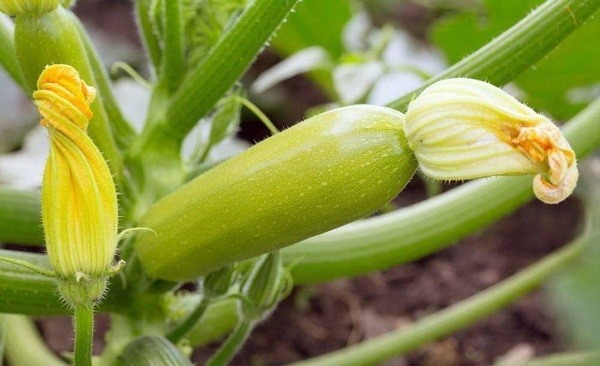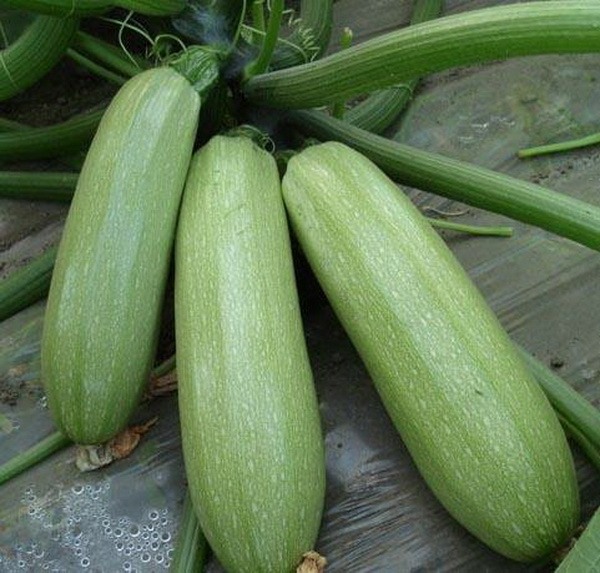I have been into vegetable gardening for over five years, and zucchini plants are the easiest crops to grow in most climates. But there are situations where the dark green leaves will turn yellow and start dying. The foliage discoloration is an indicator of something going wrong.
So, why are my zucchini leaves turning yellow? Zucchini yellow leaves are due to nutritional deficiency, inappropriate watering routines, lack of sunlight, damaged roots, transplant shock, diseases, and pest infestations.
I recommend examining your crops to identify the exact cause and implement appropriate measures to resolve it. Meanwhile, continue reading this article to know the reasons behind the potted zucchini leaves turning yellow.

Causes of Zucchini Leaves Turning Yellow
Nutritional Deficiencies
Chlorosis in zucchini varieties is due to nutrient deficiencies. The absence of vital nutrients is the reason behind the yellow zucchini leaves.
I recommend getting your soil tested at your local lab to determine the missing nutrients. The test result will help to rectify the issue.
Another excellent option is to use fertilizer rich in nitrogen and iron nutrients. Nitrogen helps to promote green vegetative growth on zucchini plants.
Iron nutrients are essential for chlorophyll formation. Most crops need a small amount of iron for green foliage production. The absence of iron in the soil will result in the yellowing of leaves.
Inappropriate Soil pH
Zucchini plants thrive in a soil pH range of 6.5 to 7.0. The slightly acidic soil allows the crop to experience green vegetative growth.
Alkaline soil is a contributing factor to chlorosis. You need to avoid adding lime to the potting soil of zucchini plants. It will help to prevent your potted zucchini leaves from turning yellow.
Use compost to help in correcting the imbalanced soil pH. Add lots of organic matter and well-rotted manure to fix the problem faster.
Overwatering Stress
Overwatering is the leading cause of zucchini leaves turning yellow. Too much soil moisture inhibits oxygen circulation around the zucchini roots.
A damp environment with insufficient oxygen increases the risks of root rot. The rotten roots are unable to absorb nutrients for chloroplast formation, which leads to chlorosis.
Consider a drip irrigation system to water your zucchini plants. The method helps to regulate soil moisture content and prevent zucchini leaves from turning yellow.
Inconsistent Watering Habits
Zucchini plants do best in slightly moist soil. Dry soil will make zucchini crops wither leaves that often turn yellow. The issue happens due to plant dehydration.
The plant becomes unable to absorb vital nutrients and minerals via roots to enhance the formation of the chloroplast. Zucchini leaves turning yellow become a sign of dehydration.
Water the potted zucchini leaves turning yellow to rehydrate the plant. Soak the potting soil until excess water runs through the drainage holes without getting soggy.
The golden rule is to insert an index finger in the potting soil to determine moisture content before watering the potted plant. It will help to reduce the risk of overwatering issues.
Lack of Sunlight
Natural light is essential for the photosynthesis and formation of chlorophyll. Zucchini plants need six to eight hours of natural light in a day.
Insufficient sunlight is the reason behind the potted zucchini leaves turning yellow. The issue is common when the crop is grown in a shady spot of the garden.
Relocate the potted zucchini plant to a place that receives sufficient light. Greenhouse zucchini crops will benefit more from artificial lights.
Transplant Shock
Indoor zucchini plants are more vulnerable to yellow leaves when being transplanted into the outdoor garden. It is due to transplant stress.
Most plants take time to adjust to a new environment. Zucchini crops take a few days and bounce back. Exercise ultimate care when transplanting your zucchini plants.
Be sure to wait for your indoor zucchinis to harden before transplanting them in the garden. Use growing hormones to stimulate plant growth to avoid the yellowing of leaves.
Remember to transplant zucchinis during spring and early summer. It is the season where most crops experience vegetative growth at a faster rate.
Plant Diseases
Zucchini plants are more vulnerable to diseases that cause yellow leaves. These plant diseases occur where there is no crop rotation to provide the best defense.
Most diseases and sicknesses can last in the soil from fall to spring when growing zucchini. If you tend to grow zucchinis in the same spot, they are prone to leaves turning yellow.
I recommend moving your zucchinis to a different area to break the cycle. It will help to prevent the mosaic virus, fusarium wilt, and downy mildew.
Pest Infestations
The juicy stems and leaves make zucchini plants vulnerable to insect infestations. These sap-sucking insects munch the leaves and inject toxins that cause yellowing.
Some insects suck nutrients from the leaves to cause wilting and yellowing. The rule of thumb is to identify the exact pest attacking the crop.
Aphids result in a black sticky residue on the leaves’ underside and also spread the cucumber mosaic virus. Spider mites leave fine webs behind the leaves after sucking sap and draining nutrients.
Squash bugs munch the leaves and leave yellow spots that will often turn brown. Sometimes, they kill the plant and reduce the yields.
Heavy and Compact Soil Structure
Heavy and compact soil can cause poor root development and growth. Besides that, it increases the risk of overwatering issues like root rot.
Yellow leaves on potted zucchini plants are due to poor roots development and growth. Zucchini plants thrive in light and well-draining soil.
I recommend the mixture of compost, peat moss, and perlite for potted zucchinis. These potting mixtures are lightweight and well-draining to inhibit waterlogged problems.

Frequently Asked Questions
Why Are My Zucchini Leaves Turning Brown?
Over-fertilization and excess direct sunlight are the leading cause of zucchini leaves turning brown. Other possible causes are bacterial wilt and dehydration.
Take the time to examine your potted zucchini plants and identify the exact cause of leaves turning brown. Use the information and implement appropriate measures for fixing them.
Why Are My Zucchini Leaves Turning White?
Powdery mildew and downy mildew are the possible cause of white spots on zucchini leaves. Powdery mildew is a fungal disease, and downy mildew is closely related to algae.
I recommend the use of fungicide spray to treat these diseases. Remember to isolate potted zucchini plants from other crops to inhibit the disease’s spread.
How Do You Fix Yellow Zucchini Leaves?
Zucchini leaves turning yellow are due to improper sunlight, inappropriate watering, nutritional deficiency, pests, and diseases.
The golden rule is to examine your crops and identify the exact cause. It will help to implement the right action and resolve yellow zucchini leaves.
Conclusion
Zucchini plants are prolific and easy to grow crops. These plants usually grow fast and overtake the garden with their rumbling vines and fruits. (Source: University of Minnesota).
Yellowing zucchini leaves is a common problem. It occurs due to pest infestations, diseases, lack of sunlight, nutritional deficiencies, and inappropriate watering routines.
I hope the information in this article will help you fix the yellow zucchini leaves. The zucchini diseases pictures will help you identify the exact problem affecting your crops.